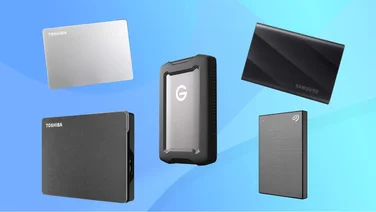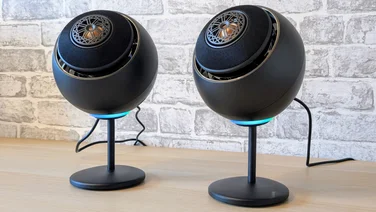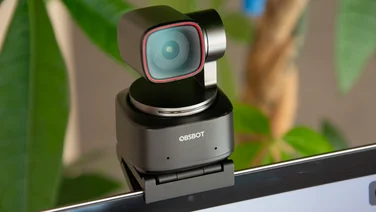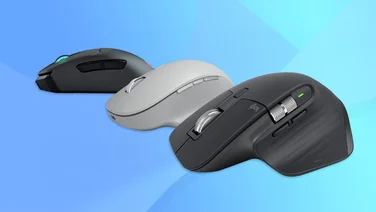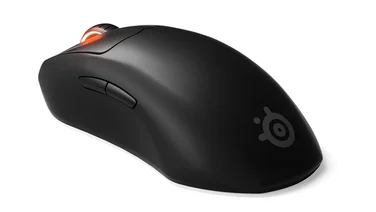To help us provide you with free impartial advice, we may earn a commission if you buy through links on our site. Learn more


















- Decently priced
- Offers real peace of mind
- Huge Tile community
- Tile Premium subscription is probably overkill
If you have a smartphone in your pocket, then youve probably never considered it to be the technological equivalent of a bloodhound, able to sniff out lost items wherever they might be hiding. Well, it is just so long as they happen to have a Tile attached to them.
Since 2015, Tile has made little Bluetooth doohickeys which can be stuck on or attached to your most valuable things. If you lose one, just load up the app and the Tile attached to the item in question will play an infuriatingly catchy jingle if youre in range, allowing you to track it down. If its not in range, then the millions-strong Tile community will unbeknownst to them hunt down the lost item on your behalf, and ping you a notification when one of their smartphones locates it.


















Its an ingenious little bit of Bluetooth-powered peace of mind. The burning question is whether Tiles 2019 update offers much more than the rather excellent 2018 editions.
Tile Bluetooth trackers (2019) review: Price and competition
Over the last four years, Tile has established itself as the main player in the same way that Hoover became synonymous with vacuum cleaners. Yes there are rivals like TrackR and Chipolo, but the main rival to any given Tile generally isnt from another brand; its another product from Tiles own portfolio. So lets meet the latest additions.
First up, there are the two refreshed models: the Tile Pro and Tile Mate.


















The former now has a range of up to 400ft (up from 300ft last time) and the loudest ringer on any product in the catalogue. As with last years version, the battery can be replaced yourself with a CR2032 watch cell. Itll set you back £29.99.


















Next up is the refreshed Tile Mate. Its a tenner cheaper at £19.99, and has a boosted range of 200ft, up from 150ft last time around. It also takes a replaceable battery: this time a CR1632.


















Then there are two new products. Well, sort of one is new and the other is resurrected. I reviewed the original Tile Slim for Expert Reviews sister site Alphr, but the new Slim doesnt look much like its ancestor. Now its credit card-shaped well, two credit cards stuck together, anyway. It doesnt have a replaceable battery, but the built-in cell should be good for three years, and the alarm can be triggered from 200ft away. It sells for £24.99.


















Finally there are the Tile Stickers, which are small tags that can be stuck to just about anything. They come in packs of two (£34.99) or four (£54.99) and are attached with 3M adhesive. Theyre waterproof, so bikes, cars and headphones can be tagged, though Ive just been using mine on an iPad mini and a tiny speaker remote that has a love for the space between sofa cushions. No battery replacements here, but the built-in cell is good for three years all the same.
Tile Premium is still available, by the way: thats an optional £3-per-month service that will provide alerts when youre about to leave something behind, share Tiles between accounts, provide a 30-day location history and send out replacement batteries (where applicable). Its decent enough value, but personally an expense that I find unnecessary.
Tile Bluetooth trackers (2019) review: What you need to know
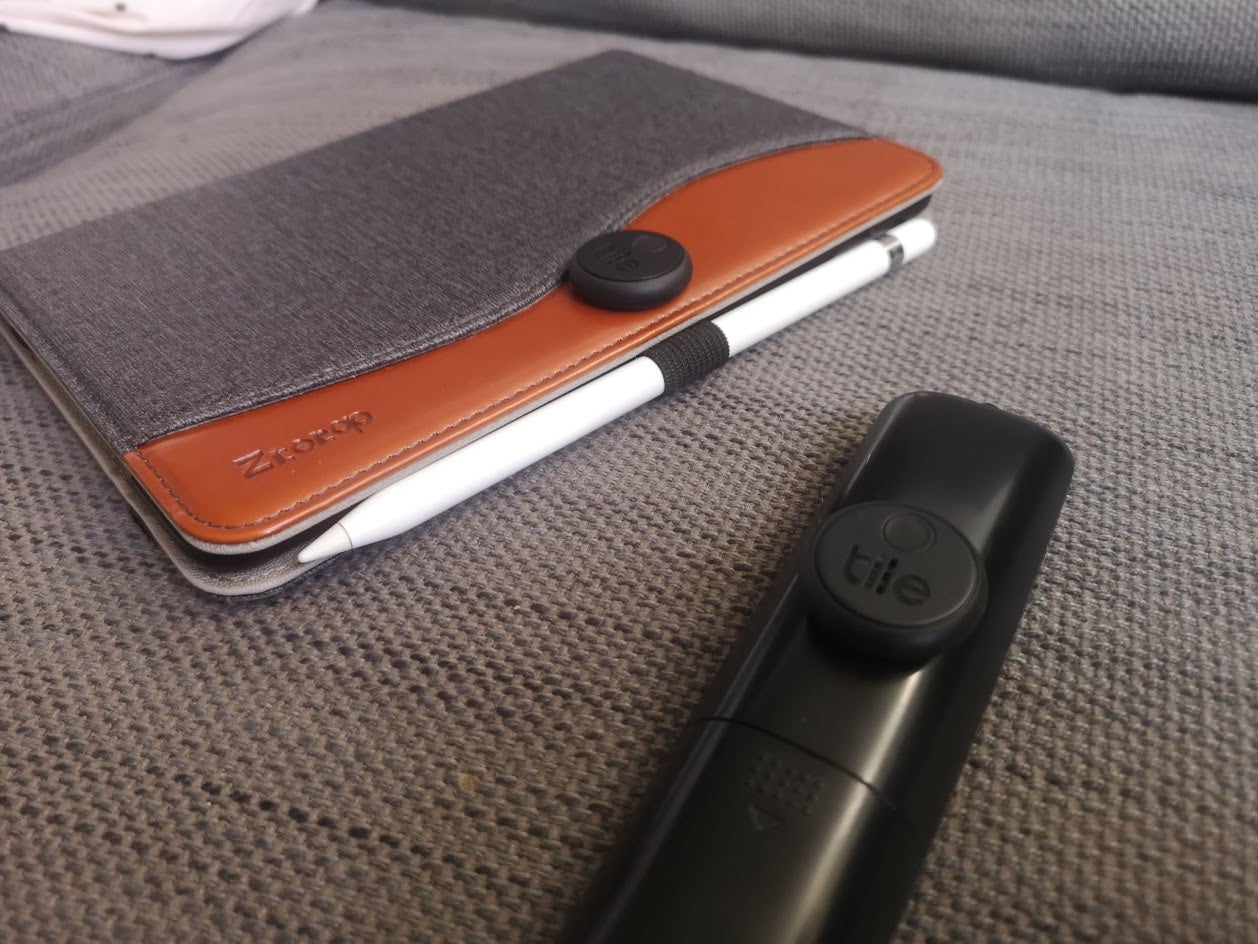
I wont spend too much time talking about what they look like, because you can see for yourself in the pictures. Suffice it to say theyre all of sensible dimensions for their purpose, with the possible exception of the Tile Stickers which may feel a bit bulky depending on where you put them. I have one on my iPad mini case, which looks like Ive walked out of a shop without paying, and one attached to a remote to my TVs speakers, which adds a hell of a lot of heft.
But otherwise, theyre very good. They dont feel like they can be budged once theyre attached, no matter how much you pull on them, and hopefully thatll be the case for the full three years of their battery life.
Each one has a button on the front, which is both used for pairing and reverse tracking – which is to say tracking your phone when it’s lost but your Tile isn’t. This is a good idea in theory, but I found it a little troublesome on the Tile Mate when worn in the backpocket of some running shorts. Suffice it to say, it’s quite easy to trigger the notification on your phone by mistake when sat upon.
Before I get into how they perform, heres a little guide as to how theyre supposed to work. You attach them to your possessions and then forget about them. Should your item go missing, you load up the app which immediately tries to connect to the stray device. If its in range, you tap the find button and the Tile begins to play a maddeningly catchy chiptune-style jingle (theres actually a few of these, but the default ditty is an absolute banger.) The app also shows you how close you are, so if you cant hear it, you can move around until you do like a game of Huckle buckle beanstalk (no, I didnt know thats what its called either!).
If its not in range, the app will show the last location where it was seen so you can go and look for yourself. If it doesnt connect when you get there, you can mark it as lost, and this is where the millions of other Tile users will silently begin hunting for it. If a Tile user happens to walk nearby, youll get a notification telling you where it was spotted.


















Tile doesnt give exact numbers of its userbase, and to be fair it probably doesnt know exactly. It has shipped 24 million devices though, and claims that 90% of objects marked as lost turn up. In the app itself, it tells you how many Tile users are in your local area in the same way a dating app might. In South London, where I live, that total seems to be between 3,000 and 7,000 depending on the time of day (most of my neighbours clearly dont share my luxury of working from home.)
Thats the idea, anyway, so how does it work? Well, I conducted two main tests for each type of Tile. The first related to volume, and the second to range.
All the Tiles seem piercingly chirpy when out in the open, but piling them beneath a big stack of duvets made all of them tough to hear. The Tile stickers were basically inaudible, but none of them exactly excelled. If this scenario seems likely to occur to you in the real world, then the Tile Pro performed best, as youd imagine it would given that its advertised as the loudest.


















Unimpeded by said stack of duvets, all of them can be clearly heard from quite a distance away even when I put all the devices in the bottom corner of my house and then headed to the opposite corner in the third-floor loft. Only the Tile Pro could be immediately found in the app from the far corner of the loft, but moving to a position directly above the devices on the ground floor caused both the Tile Slim and Tile Sticker to burst into life. Only the Tile Mate required me to descend one floor before it appeared.
This is kind of a moot point though, because the app has a visual aid as well as an audible one. Even when I couldnt hear the Tiles under a pile of quilt and fabric, the app still told me they were nearby, so thats fine as long as youre prepared to do some digging at least you know what youre looking for is definitely there.
Tile Bluetooth trackers (2019) review: Verdict
In short, Tile is just as good a product as it was last year, only with the added flexibility of new form factors. Despite the weaker sound and chunky dimensions, Im particularly impressed with the Tile Stickers: their superhuman stickiness gives real peace of mind for items exposed to the elements.


















In an ideal world, youd never need a product like Tile. But if you do end up needing it, that modest £20 to £35 outlay could be worth its weight in, well, whatever it is that youve lost.


